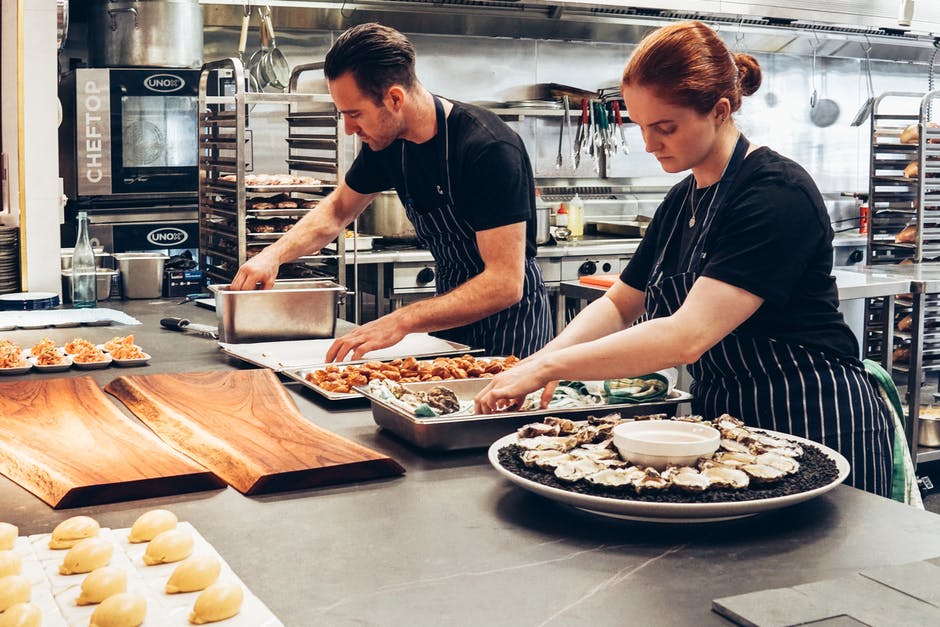If you work in food services, you see it all—wrists and hands that ache from gripping tongs, shoulders that complain from being hunched over the cooking line, backs that beg for a day off. The good news? Looking out for kitchen safety doesn’t have to be stressful. Investing ergonomics for kitchen workers can help improve employee retention, boost efficiency, and reduce the risks of costly workplace injury claims. Here’s what you should know.
What Is Kitchen Ergonomics?
Ergonomics is a science that focuses on the design of jobs and workplaces to promote safe and healthy working conditions. By assessing the dangers of everyday kitchen tasks, you can identify potential risks. Here are three tips that will help you improve ergonomics for your kitchen workers.
Tip #1: Assess the Dangers of Common Kitchen Tasks
Kitchens can be hazardous places, thanks to hot stoves and sharp knives. It’s essential to know how to properly handle the tools and tasks that are common in kitchens. Here are four such tasks.
- Chopping — Repetitive wrist motions can wreak havoc on the body and lead to injuries and conditions such as Carpal Tunnel Syndrome.
- Lifting — Lifting heavy items, such as full trays of food and heavy sacks of flour, can be a back-breaker. Pay attention to posture and proper techniques when lifting. When possible, use rolling carts and dollies to move large amounts of food, supplies, and equipment from one location to another.
- Cooking— Kitchens can get very hot. The main culprits are cooking and steam from dishwashing. Both heat sources can cause burns if employees aren’t careful. Employees must wear proper protective clothing and shoes when working around heat sources. And businesses should make sure kitchen work areas have adequate ventilation.
- Standing — Kitchen staff members spend a lot of time on their feet, and posture makes all the difference. Teaching employees how to stand, encouraging frequent breaks, and offering padded flooring can mitigate the risks of back strain.
Need help spotting potential risks in your kitchen?
Contact McClure Ergonomics Consulting today to get started on a workplace safety checklist!
Tip #2: Know the Signs of Musculoskeletal Disorders
Experiencing back pain while working in food service is a common problem. Often, the issue is due to improper ergonomics. Spotting the symptoms of musculoskeletal disorders is the first key to reversing the problem. Here are some signs to watch out for.
- Pain that lasts more than 12 weeks
- Numbness or tingling
- Muscle spasms
- Weakness
- Stiffness
- Loss of coordination
- Difficulty lifting or grasping objects
- Fatigue
- Headache
- Vision changes
Symptoms of mental stress may also occur with Musculoskeletal Disorders.
Tip #3: Consider Ergonomics in Kitchen Design
Good ergonomics starts with good design, so be sure your kitchen layout sets your team up for success. First, check for proper use of work surfaces, easy access to tools and utensils, and proper placement of safety equipment. In addition, here are three quick basic kitchen ergonomics tips.
- Make sure lighting is adequate. Dim lighting can create unsafe conditions when working with knives.
- Keep surfaces sanitized. While back injuries are a top risk for kitchen workers, dirty surfaces and cross-contamination pose health risks too—for both employees and customers.
- Make work surfaces easily accessible. Aim for a comfortable work surface height between 28‒35 inches off of the ground. This allows employees to use proper body mechanics when chopping, prepping, cooking, or washing dishes without bending over.
Need a Kitchen Ergonomics Assessment? McClure Ergonomics Can Help
Is it time for your kitchen to undergo improvements? Don’t leave employee safety to chance! McClure Ergonomics can help you protect your staff and your business.


